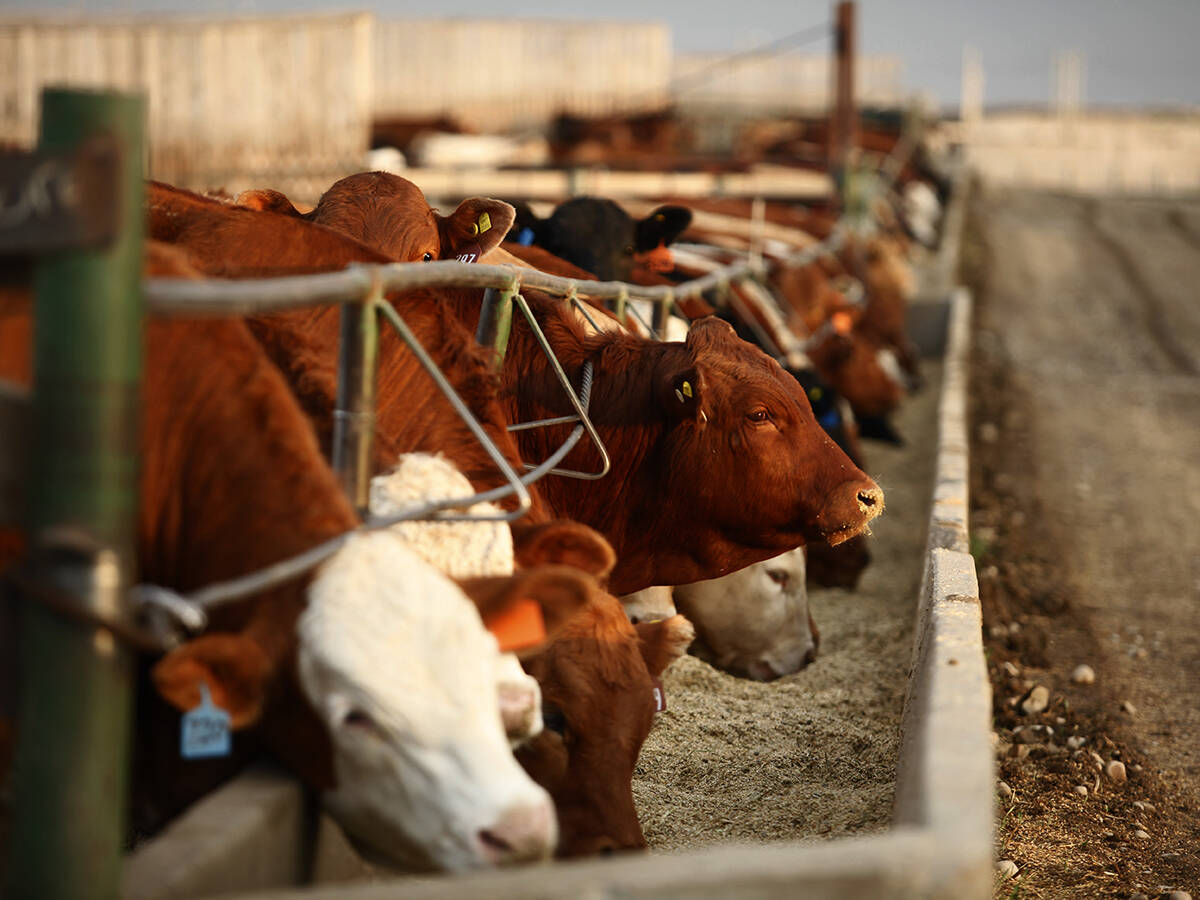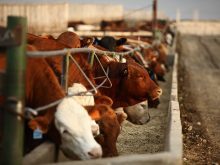Southern Alberta horse owners are being advised to watch their animals for large lumps on their chests, following what are apparently the first-ever cases of pigeon fever in the province.
Pigeon fever is a disease common in the southern States, said Dr. Connie Fancy, veterinarian with Claresholm Veterinary Services. This year, Fancy and three other vets who work in her practice have seen about 20 horses infected with pigeon fever in Claresholm, Fort MacLeod, Lethbridge and Taber.
Fancy said she talked to a veterinarian further north, who hasn’t seen any cases in Calgary or east of Calgary. “Pincher Creek hasn’t seen any cases either, so that’s sort of interesting,” she said.
Read Also

U.S. livestock: Cattle extend gains on improving cash prices, packer demand
Reuters — Chicago Mercantile Exchange live cattle futures set a three-week high and feeder cattle hit their highest level in…
Pigeon fever is a bacterial infection transmitted by flies. The disease causes abscesses to form on a horse’s chest muscles.
“That’s why it’s called pigeon fever,” said Fancy. “The horse looks like a pigeon with these swollen chest muscles.”
Abscesses can also grow under the belly, on a horse’s face or around the ears. The horse will develop scaly skin, followed by hard lumps that burst and drain thick pus. When pus drains, flies flock to the pus and spread the disease.
“The flies are the carriers and they carry the pus infection to the next horse by burying in their skin. The flies create ulcers on the skin, and then infect the next horse,” said Fancy.
The disease is contagious, but is not spread by horse-to-horse contact. Any fly that burrows in a horse’s skin can be a carrier. The bacteria can infect other animals as well but there are different strains, so it’s rare for cross-infection to occur.
There’s no vaccine and no way to prevent pigeon fever. Antibiotics are useless in pigeon fever cases, since the drugs have no effect on the bacterium in the equine’s body. If antibiotics are used before the abscesses drain completely, the infection can be prolonged and abscesses can develop internally.
About eight per cent of affected horses develop internal infections, and about 30 per cent of these horses die.
Fortunately, horses with external abscesses have a high survival rate.
Managing infection
When abscesses are drained, producers need to flush the abscesses on a daily basis, keep the area clean, and use fly spray to keep the flies from spreading the pus. External infections should clear up after several weeks. Infected horses need to be isolated from other horses.
“If flies get into the discharge, they can transmit it to other horses that are quite far away. You have to actually collect that discharge and burn your bedding, and disinfect anywhere the discharge has touched,” Fancy said.
Producers can also use fly sheets or fly masks to keep flies away from the discharge.
Horses with pigeon fever show soreness or stiffness in their front legs because of the thick abscesses in the pectoral muscles.
“They almost look like they’re foundered because they can’t move their legs properly in the front end,” Fancy said. “That’s the first sign you see.” Sick horses may also develop a fever.
Fancy cautions against letting abscesses burst on their own.
“You can get a huge crater of a wound and those can be very difficult to manage.” She recently saw one horse with pigeon fever that had to be put down, even though it had an external lump, as the wound was too big to heal.
Fancy recommends horse owners take any horse with an abscess to their veterinarian. Vets can ultrasound to see when the lump should be opened and drained in a controlled manner. “Then you can get a tube in there and have the owner flushing in it,” she said.
Since the disease is transmitted by flies, it appears in the peak season of flies.
“If this is something that is now endemic in Alberta, we’d be looking at it in mid- to late summer, when flies are at their peak,” Fancy said. “We have no idea what the disease will do now that it’s here. It’s possible that the disease may die off during the winter. It’s hard to say.”
— Alexis Kienlen is a reporter for Alberta Farmer based in Edmonton. Follow her @alexiskienlen on Twitter.















